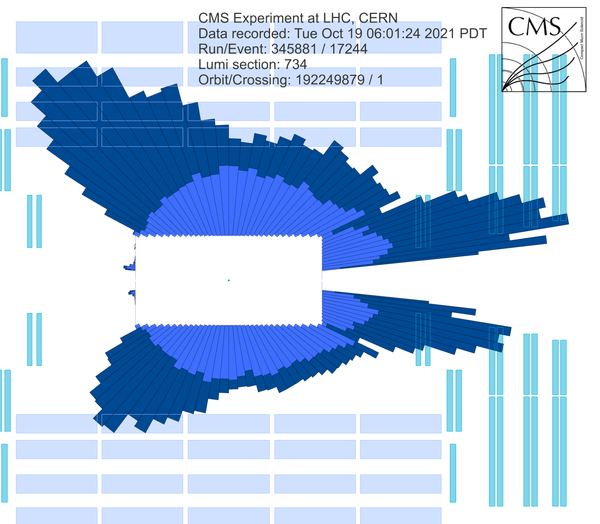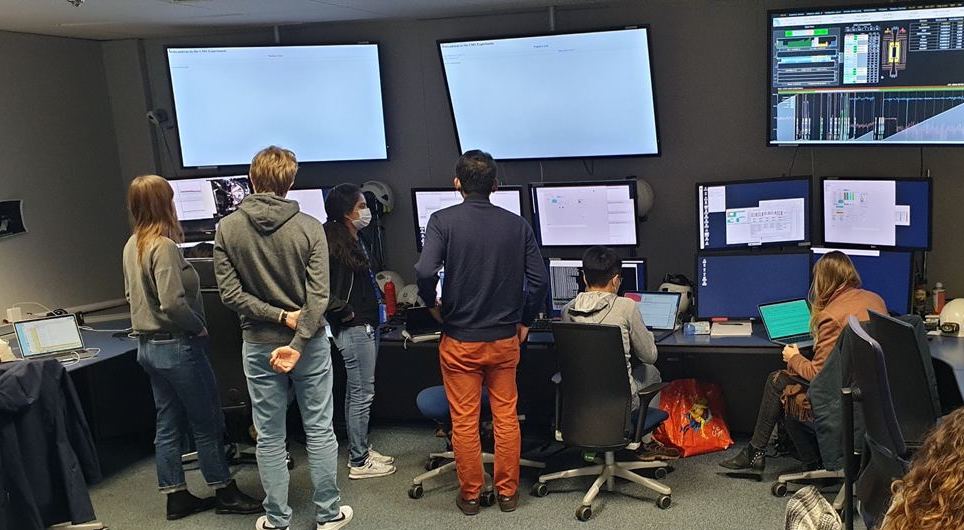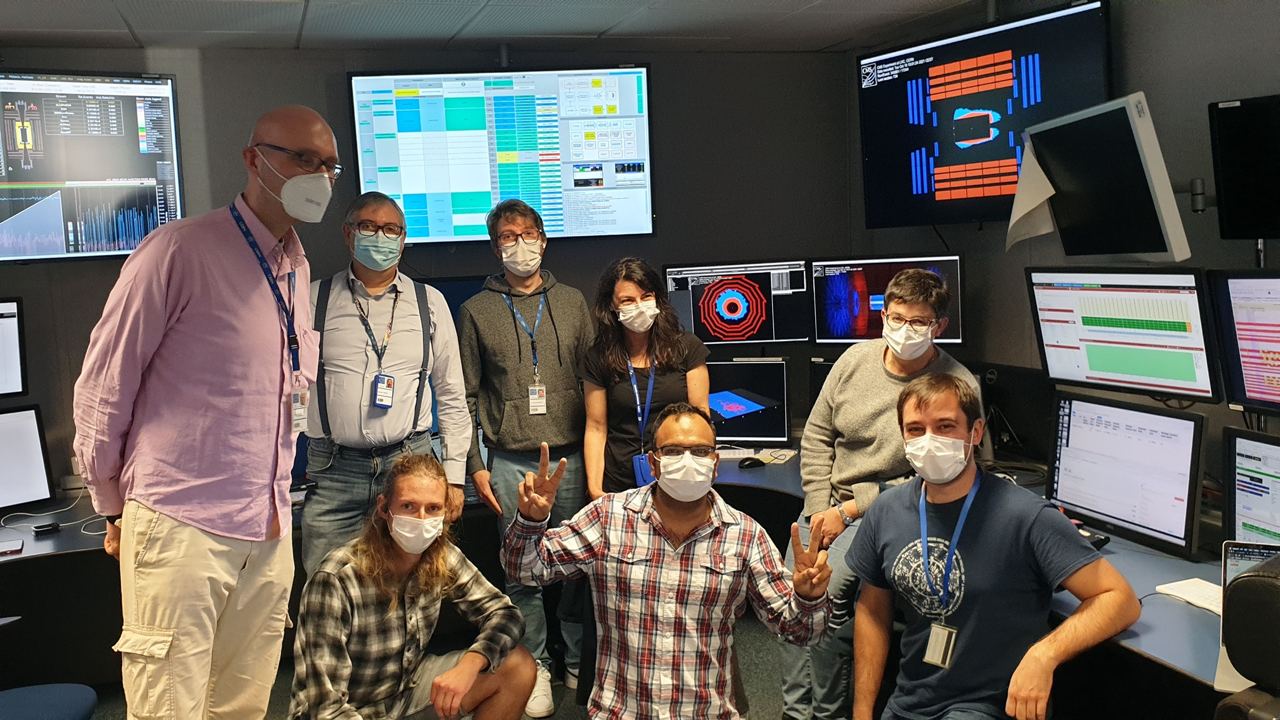We have been seeing the major experiments at the Large Hadron Collider (LHC) at CERN showing colorful images of splash events this week. The CMS experiment has also seen some nice ones already. But you may wonder: what is a splash event? Another way to say beam-beam collision? Nope! These are two different things.

In order to make the beams of protons circulate again at the LHC, since the end of Run 2 in 2018, two weeks of pilot beam runs have been planned in preparation of the Run 3 starting next year.
When proton beams are circulating clockwise and anticlockwise along the biggest accelerator in the world, the main goal is to make them collide into each other exactly in the center of the big detectors, like CMS. Such a beam-beam collision is an unimaginably difficult task: beams are so small that they are invisible to the human eyes, they are directed to run at almost the speed of light. Moreover their trajectory has to be carefully and very precisely adjusted by setting the parameters of the big LHC magnets all along the 27km of the ring. It may seem impossible but at CERN it is not!
This incredible result of making beams circulate and then collide needs to be achieved step by step. One of the first steps is to pass the beam through the accelerator and then make them splash at specific points along the LHC ring.
Splashes are created deliberately by the LHC operators: they first take one of the beams part of the way along the LHC ring and then obstruct its path with one-meter-thick graphite or tungsten-alloy "collimator'' that basically acts as a wall against which the beam collides. Some collimators can be found close to the CMS experiment, right outside both sides of its underground cavern. When the proton beam hits these tungsten-alloy blocks, a spray of particles is produced that travels further, passing through CMS as one huge "splash" of particles. Among the particles emerging from the splashes, muons (heavy cousins to the more-familiar electron) are the only one not stopped by the collimators. These particles are detected by the CMS experiment enabling researchers to fine-tune the detector synchronization - down to hundreds of picoseconds - and allow them to check that as many of the individual detector elements are working nominally.
A recent splash event seen by the CMS detector this week is so nice that it looks like a butterfly. The “butterfly” splash event shows the electronic signal left by large numbers of muon particles detected by the CMS electromagnetic calorimeter (ECAL - light blue) and hadronic calorimeter (HCAL - dark blue). The ECAL and HCAL are designed to detect and measure high-energy electrons and photons, and charged hadrons respectively and they are not very sensitive to the passage of single muons. But the splashes produce so many muons that their combined energy creates large signals seen also by ECAL and HCAL sub-detectors.

In preparation for Run 3, CMS scientists have worked hard during the Long Shutdown 2 period dedicated to LHC and detectors upgrades, and faced new difficulties dictated by the pandemic. Nevertheless, even with these exceptional challenges, all major upgrades planned for the CMS detector have been completed in time for the two weeks of pilot beam, including the re-commissioning of the huge CMS magnet.
The first week of pilot beams is almost done, and researchers, who have been on shift day and night at the CMS control room monitoring the status of the detector, can hardly wait to see the first beam-beam collisions that may occur in the next few days!

Credits: G. Boudoul

Credits: G. Boudoul
The views expressed in CMS blogs are personal views of the author and do not necessarily represent official views of the CMS collaboration.
